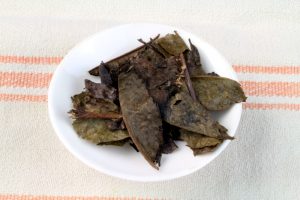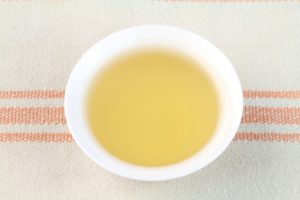I received this tea in a generic bag from a friend, I don’t know who produced it and my friend doesn’t know either.
But basically, this is very similar to a kyobancha, except that it isn’t made in Kyoto.
Another difference is that this tea has a very light roast. The tea leaves still have a green color.
Let’s try it out
The aroma of the leaves is sweet. I can feel the roasted notes but they are very light.
The traditional way to make this tea would be to keep boiling the water with the tea leaves in it, but I’ll just prepare it like a regular houjicha in order to compare it since I also prepare kyobancha that way.
So that means 120 ml (4 oz) of boiling water, 4 grams of tea, and an infusion time of 30 seconds.
Some of the twigs were quite long and thick. I had to cut them down in order for them to fit. It’s definitely a bancha, meaning that it consists of mature leaves.
After the infusion I notice that the wet leaf aroma also feels light. It’s not as roasted as the average houjicha, and it has notes of chocolate.
The liquor is green with some brown in it. Like a mix of houjicha and bancha.
As expected, it has a mild flavor with low sweetness. I can’t feel any bitterness either.
I made another infusion in the same manner. The color of the liquor became lighter.
The taste seemed to be pretty much the same.
A third infusion resulted in a watered down flavor, too light for my taste.
Overall, it’s a very light tea. It’s probably closer to a bancha than a houjicha.
Not a bad green tea, but I prefer a kyobancha because it has a bolder flavor.







January 28, 2020
In short not much taste … some have a slight acidic taste like home made yogurts…
January 28, 2020
Yes, Awa bancha has a similar appearance but is a fermented tea. It has that sour taste but I like it, also its aroma is very interesting.